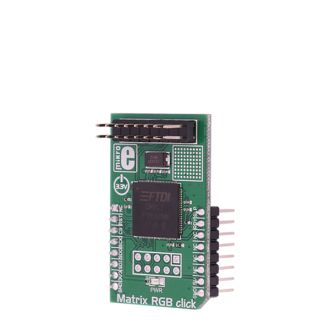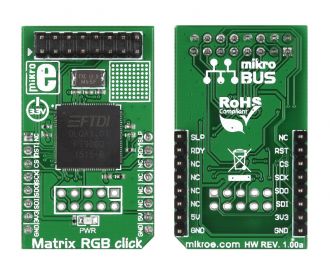
We strongly encourage users to use Package manager for sharing their code on Libstock website, because it boosts your efficiency and leaves the end user with no room for error. [more info]

Rating:
Author: MIKROE
Last Updated: 2018-07-22
Package Version: 2.0.0.0
mikroSDK Library: 1.0.0.0
Category: LED matrix
Downloaded: 7819 times
Not followed.
License: MIT license
Matrix RGB click is a mikroBUS add-on board powered by a 32-bit FT900 MCU designed specifically for powering 32x32 or 16x32 RGB LED matrices.
Do you want to subscribe in order to receive notifications regarding "Matrix RGB Click" changes.
Do you want to unsubscribe in order to stop receiving notifications regarding "Matrix RGB Click" changes.
Do you want to report abuse regarding "Matrix RGB Click".

